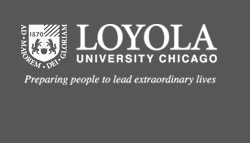Date of Award
2016
Degree Type
Dissertation
Degree Name
Doctor of Philosophy (PhD)
Department
Chemistry
Abstract
To attack cancer cells in a specific manner, we have developed a folate-targeted, photodynamic therapy (PDT) agent. The folate (FA) and the chlorin e6 (Ce6) photosensitizer were attached to bovine serum albumin (BSA) using carbodiimide chemistry. Since over 50% of cancers overexpress folate receptors, FA-BSA-Ce6 can be taken up by them and is an effective PDT agent. Hela cells exposed to FA-BSA-Ce6 in the dark showed no cytotoxicity. Upon exposure to light, the conjugate was dose (time and concentration) dependent. Concentrations less than or equal to 2 µM were not effective at killing Hela cells but concentrations of at 5 µM and above lead to 95% cell death with a 4 min exposure to 660 nm light.
Cancer cells are not alone in expressing many folate receptors. Embryos also need folate to support rapid cell division. This suggested that FA-BSA-Ce6 could also be used to study development in zebrafish. We used reverse transcription-polymerase chain reaction (RT-PCR) on total RNA prepared from 9 embryonic stages. Expression was seen in all stages assayed. An antisense and sense riboprobes were generated to perform whole-mount in situ hybridization. All of the stages tested with the antisense probe demonstrated the presence of folr1 mRNA, while sense probe assayed at the same stages were negative. Fluorescent-tagged folate living embryos demonstrated bright florescence indicating successful uptake of conjugates.
Recommended Citation
Jones, Rojenia, "Development of Folate Directed, Protein Based Photodynamic Therapy Agents" (2016). Dissertations. 2136.
https://ecommons.luc.edu/luc_diss/2136
Creative Commons License

This work is licensed under a Creative Commons Attribution-Noncommercial-No Derivative Works 3.0 License.
Copyright Statement
Copyright © 2016 Rojenia Jones


